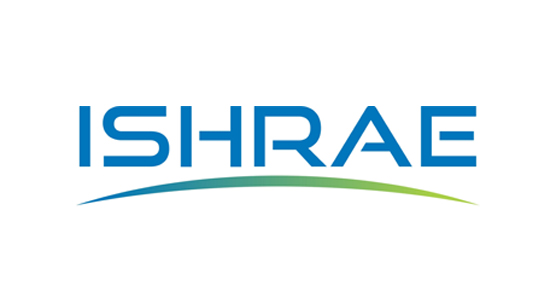Supervisory Control and Data Acquisition (SCADA): Protecting Industrial Automation Systems

In the era of industrial automation, Supervisory Control and Data Acquisition (SCADA) systems play a pivotal role in monitoring and controlling industrial processes. These systems are integral to sectors such as manufacturing, energy, water management, and transportation. However, with their increased reliance on interconnected networks, SCADA systems have become attractive targets for cybercriminals. Securing these systems is critical for ensuring the safety and efficiency of industrial operations.
Understanding SCADA Systems
SCADA systems are a combination of hardware and software that collect, process, and visualize data from industrial equipment. Key components include:
- Remote Terminal Units (RTUs): Devices that interface with sensors and actuators to collect data.
- Programmable Logic Controllers (PLCs): Controllers that execute automation tasks.
- Human-Machine Interfaces (HMIs): Interfaces that allow operators to interact with the system.
- Communication Networks: Systems that facilitate data exchange between components.
SCADA systems provide real-time monitoring, enabling operators to make informed decisions and automate processes for improved efficiency and productivity.
Why SCADA Security is Crucial?
As SCADA systems control critical infrastructure, a security breach can have devastating consequences, including:
- Operational Disruptions: Downtime in operations can result in financial losses and safety hazards.
- Data Breaches: Unauthorized access to sensitive data can compromise system integrity.
- Physical Damage: Cyberattacks can manipulate equipment settings, leading to equipment failure or catastrophic outcomes.
- National Security Risks: Attacks on critical infrastructure can destabilize essential services, impacting public safety and the economy.
Common Threats to SCADA Systems
- Malware and Ransomware: Malicious software can infiltrate SCADA networks, encrypting data and demanding ransom for its release.
- Phishing Attacks: Cybercriminals use deceptive emails to gain access to sensitive information or credentials.
- Denial of Service (DoS) Attacks: Flooding networks with traffic to render SCADA systems inoperable.
- Insider Threats: Employees or contractors with access to the system may intentionally or unintentionally compromise security.
- Zero-Day Vulnerabilities: Exploitation of unknown security flaws in SCADA software.
Key Strategies for SCADA Security
- Robust Network Architecture
- Segregate SCADA networks from corporate IT networks to reduce exposure to external threats.
- Implement firewalls and demilitarized zones (DMZs) to control traffic between networks.
- Use Virtual Private Networks (VPNs) for secure remote access.
- Regular Updates and Patch Management
- Keep SCADA software and firmware up to date to address known vulnerabilities.
- Schedule updates during maintenance windows to minimize operational impact.
- Monitor vendor advisories for patches and updates.
- Encryption and Secure Communication
- Encrypt data transmissions to protect against interception and tampering.
- Use secure communication protocols such as TLS (Transport Layer Security).
- Ensure endpoint devices support encryption standards.
- Access Control Measures
- Implement role-based access control (RBAC) to limit user permissions.
- Use strong, unique passwords and enforce regular password changes.
- Enable multi-factor authentication (MFA) for accessing SCADA systems.
- Intrusion Detection and Prevention
- Deploy intrusion detection systems (IDS) to monitor network traffic for anomalies.
- Use intrusion prevention systems (IPS) to block suspicious activities in real time.
- Conduct regular security audits to identify potential vulnerabilities.
- Employee Training and Awareness
- Educate employees on cybersecurity best practices and the importance of SCADA security.
- Conduct regular training sessions on identifying and mitigating phishing and social engineering attacks.
- Develop a culture of security awareness to reduce insider threats.
- Incident Response Planning
- Establish a clear incident response plan to address security breaches promptly.
- Define roles and responsibilities for incident management.
- Conduct regular drills to test the effectiveness of the response plan.
- Leveraging Advanced Technologies
- Artificial Intelligence (AI): Use AI-driven analytics for real-time threat detection and response.
- Machine Learning (ML): Employ ML algorithms to predict and identify unusual patterns in network behavior.
- Blockchain: Secure data integrity and enhance trust through immutable transaction records.
Case Studies: SCADA Security in Action
- Water Treatment Facilities:
- In 2021, a water treatment plant in Florida was targeted by cybercriminals attempting to alter chemical levels. The attack was thwarted due to vigilant monitoring and a robust security framework.
- Energy Sector:
- The 2015 Ukraine power grid attack highlighted the vulnerabilities of SCADA systems. Lessons learned emphasized the need for secure remote access and operator training.
Regulatory Compliance and Standards
Compliance with industry standards is essential for ensuring SCADA security. Key standards include:
- NIST SP 800-82: Guidelines for securing industrial control systems, including SCADA.
- IEC 62443: International standards for automation and control system security.
- ISO/IEC 27001: Standards for information security management systems.
Adhering to these standards helps organizations establish a baseline for robust security practices.
Future Trends in SCADA Security
- Edge Computing: Enhancing security by processing data closer to the source, reducing latency and exposure to external threats.
- Integration of IoT and SCADA: Securing IoT devices to prevent vulnerabilities in interconnected systems.
- Cybersecurity as a Service (CaaS): Leveraging managed services for continuous monitoring and threat mitigation.
Conclusion
Securing SCADA systems is a critical aspect of protecting industrial automation and ensuring the safety of critical infrastructure. By implementing robust cybersecurity measures, leveraging advanced technologies, and fostering a security-conscious culture, organizations can effectively mitigate risks and ensure the reliable operation of their SCADA systems. Proactive measures today will safeguard industries against the evolving cyber threat landscape of tomorrow.





.png)







